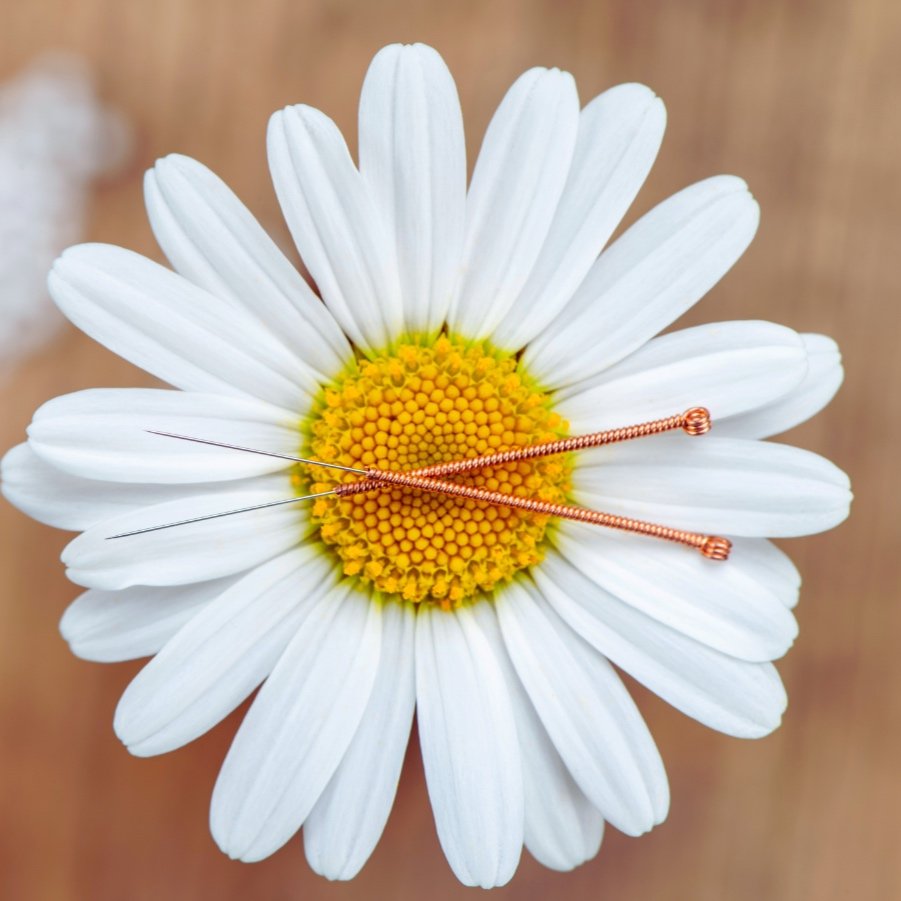Modalities Used
-
With the use of needles, that are as thin as a strand of hair from a horses tail, we can tap into the body's own healing capacity. Needles are carefully inserted into specific areas of the body to stimulate the immune system, promote blood circulation to the area, tap into the central nervous system, and encourage the body to release chemicals such as endorphins, serotoing, and dopamine. The simple act of increasing blood flow to an area moves any stagnant blood that might be present due to injury, trauma, overuse, or underuse and allows fresh new blood to enter and promote healing.
We all carry stress from living in a fast pace society, from the bombardment of cultural and societal pressures, and from having to raise a family and still make a living. Being able to lay down and allow your body to focus on itself while being able to relax is healing in itself. Acupuncture needles help your body gain groundedness, promote relaxation, and allows the space for us to focus on ourselves.
-
Cupping is a deeper deep tissue massage that uses suction to decompress muscles and connective tissue. Plastic or glass cups are used to achieve this suction. Plastic cups are applied to the skin and a pump is used to create a seal and suck out the air from the cup to create the suction. With glass cups, a hemostat is used to carry an alcohol soaked cotton ball that is lit on fire. The lit cotton ball is quiclly placed in and out of the glass cup and the cup is then quickly placed on the skin. The flame from the lit cotton ball removes the oxygen from iside the cup which allows a suction to form once the glass cup is placed on the skin. Careful precautions are taken to make sure the flame is never over the patients body or touches the patients body.
This suction allows the skin and superficial muscle layers to be draw into the cup to produce a gentle pull on them. This gentle pull moves stagnation, blockages of Qi, fluids, lymph, and blood in the body leading to pain relief.
-
A smooth edged tool is used to stroke the skin while applying pressure. This repetitive motion raises small, red, rash-like dots on the skin called petechia (known as sha in Chinese Medicine). This sha increases blood flow in the areas where it is used and promotes lymphatic drainage. For this reason gua sha is primarily used to relieve muscle pain but can also be used to help with certain health conditions and even promote anti-aging benefits during facials.
-
E-STIM (electrical muscle stimulation) uses electrical pulses to mimic muscle contraction signals coming from neurons in your nervous system. Repeated muscle contractions help repair injured muscles by improving blood flow, reduce swelling, and increase wound healing. Repeat muscle contractions can also help the muscles re-learn how to respond to the body’s natural signal to contract. Making E-STIM a helpful tool for patients whose muscles need to re-learn motor functions like bell’s palsy and stroke survivors.
-
A comfortable level of heat is applied to the body using a hot pack, heat lamp, or moxa (shown on the picture above). Heat increases blood flow and reduces lactic acid buildup helping muscles relax and heal.
Moxa is mugwort leaves that are dried and ground into sticks or cones. In Chinese Medicine mugwort is an herb called Ai Ye. This herb helps heat penetrate deeper into the body to warms the channels, calm pain, and stop itching.
-
Massage is used to increase blood flow, relax muscle tissue, and reduce nerve compression. Massage is also used to stimulate specific acupressure points to signal to the body what areas to focus on.
We also use massage as a diagnostic tool to better help us feel channels for knots, divots, bumps, and areas of tension. In this way the body can tell us what areas would benefit from other modalities.






